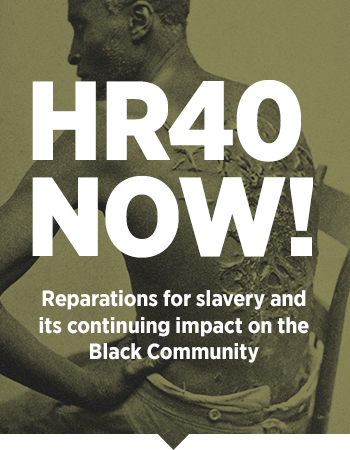Assessing how white people benefit from race-based economic inequality.

By every socioeconomic measure, there is an undeniable race-based hierarchy in the United States—with black Americans sitting at or near the bottom. In 2014, the share of black adults (at least 25 years old) with bachelor’s or advanced degrees (22 percent) is notably lower than their white counterparts (32 percent). The official unemployment rate for black workers is persistently double that of white workers: in 2015, 9.7 percent vs. 4.3 percent. Also in 2015, the African-American poverty rate (26.2 percent) stood at more than double that among white Americans (10.1 percent). Black Americans account for 38 percent of the prison population, nearly three times their share of the U.S. population. White Americans, in contrast, account for 59 percent of U.S. prisoners, under-representing their 77 percent population share.
These lopsided outcomes have, of course, two sides: by every major socioeconomic measure, white Americans sit at or near the top of the race-based hierarchy. This is an obvious point. Here’s another one: if the economic odds are stacked against African-Americans, the flipside is that white Americans have the odds stacked in their favor. We need to even these odds to achieve racial justice.
Current policy debates largely focus on reducing potential hurdles set in the way of African-Americans. These same debates, however, overlook how race-based advantages put white Americans on an easier life path. To eliminate the United States’ race-based hierarchy, we need to redirect economic resources that currently operate as a premium for being white into creating equal opportunities for African-Americans and other communities of color. Unfortunately, two policies specifically created to do so—affirmative action and reparations—only exist on the outer fringes of current policy debates.
It Pays to Be White at School
According to a 2012 study, about one-third of the nation’s students attend hyper-segregated schools: schools that are 90 percent white or 90 percent non-white. Students in the nearly all-white schools benefit from $4,985 in local and state education spending per student (adjusted for regional differences in living costs), an $810 premium over the $4,176 spent on their counterparts in the nearly all-non-white schools. (All figures are inflation-adjusted to 2015 dollars.)
Over a 13-year K-12 public-school education, this white-school premium adds up to nearly $10,000 more spending on each student in nearly all-white schools compared to students in nearly-all-non-white schools ($810 premium x 13 years of schooling = $10,530). This white advantage is even more impressive when pooled together under one school’s roof. Given the average school size of 500 students, this white premium scales up to an extra $2.8 million dollar investment into the elementary education in a nearly all-white school ($810 per student x 500 students x 7 years of elementary education = $2.8 million). This white-school premium can translate into white students learning in better physical facilities, having access to more curriculum offerings with more and higher-quality materials, and served by greater numbers of teachers and support staff.
It Pays to Be White on the Streets
City police departments’ pro-active “stop and frisk” policing techniques have come under scrutiny in recent years. The term “stop and frisk” refers to when a police officer stops and detains a person if the officer believes he or she has a reasonable suspicion that criminal activity is taking place. Controversy over “stop and frisk” policing is due to charges that officers apply the tactics unevenly—surveying and interrupting the daily routines of white Americans much less frequently than those of black Americans.
Take, for example, the practices of the Boston Police Department (BPD). In 2010, the American Civil Liberties Union of Massachusetts and the BPD co-sponsored a study of the BPD’s “Field Interrogating Observation Frisk and/or Search” (FIOS) practices. Researchers approved by both organizations examined the BPD’s database of FIOS incidents from 2007 to 2010. The study, released in 2015, concluded that the BPD treated white neighborhoods more favorably—initiated fewer FIOS incidents, compared to black neighborhoods, even after taking into account differences in neighborhood crime rates. In fact, the figures in the study indicate that white neighborhoods (defined here as 85 percent white) accumulated 2,500 fewer FIOS incidents annually compared to Boston neighborhoods with a high concentration of black residents (85 percent black).
This difference implies that if you’re living in an 85 percent white neighborhood, chances are that you would be subject to police surveillance about once every decade. So, for example, by the age 30, such a resident might be surveyed, stopped and/or frisked twice: once at age 15 and then again at age 25. This resident’s life is minimally disrupted by the BPD. If you’re living in a black neighborhood, chances are you’d have a FIOS incident every three years. In other words, by age 30, you can expect to have already had six unsolicited police encounters: at age 15, then at age 18, again at 21, again at 24, again at 27, and again at 30 years old. The situation for whites is even better than these numbers suggest. If you’re white, the police are 11 percent more likely to only stop and ask you questions, not frisk or search you and your belongings compared to if you’re black. This difference in frisking rates of whites versus blacks is the same as the BPD’s differential frisking rate of non-gang members versus gang members.
What’s it worth to be white on Boston’s streets? It’s hard to put a price tag on the ability to move around freely.
It Pays to Be White at Work
How much more do white workers benefit from paid employment than their black counterparts? That is, what is the bonus for being white in the workplace? One way to get a handle on this is to calculate how much more the average white worker earns, over a working lifetime, compared to their black counterpart. Note that in this exercise I do not “net out” differences in educational credentials, or any other type of possible measures of skill. This is in order to take account of how, for example, any white premium in schooling builds up into an additional white bonus at work in the form of job market preparation. In other words, the premium I calculate for being white at work includes the white bonus of better-funded educational opportunities, as well as increased access to better job opportunities, and higher rewards for work.
Take the situation of an average white male full-time worker and compare his experience in the labor force to his black counterpart: In 2014, the average white male full-time worker earned $10,900 more than his black counterpart: $44,900 vs. $34,000. This average male white worker also has access to a paid job more consistently compared to his black counterpart; the employment rate for white males is much higher than for black males (95.7 percent vs. 90.3 percent). Their annual earnings equal $42,900 and $30,700, after accounting for their average unemployment spells. The gap is now $12,200. At this rate, this white worker could work three months less per year, and still earn more money.
What does this mean over their entire work careers? To keep things simple, let’s say each continues to work until the end of his or her life. Because white men live longer than black men, this means that the average male white worker could potentially work from 25 to 77 years old, or 52 years. Black men die, on average, five years sooner at 72 years, for a work career of 47 years. Therefore, over an entire working career, white workers get a work bonus of $790,000—$2.2 million vs. $1.4 million. It really does pay to be white at work.
It Pays to Be White When You Stumble
In 2011, the average white household held $23,000 in liquid wealth, like deposits in a checking account or a retirement account. This is more than 100 times the average amount of $200 held by African-American households. Considering all assets, including equity in a home, the average white American had more than ten times that of the average black American, $111,740 vs. $7,113.
White people’s access to wealth gives them a boost when they’re down on their luck. Chances are much better that, if you’re white, you can draw on some inherited asset or the assets of a family member when the proverbial chips are down. Hit with a large, unexpected medical bill? If you’re white, your chances of managing this as just a bump in the road are much better than if you are black.
Likewise, white people’s greater access to wealth gives them a leg up when trying to get ahead. Starting a small business or trying to buy a house where there are good neighborhood schools? Trying to get a college degree without paying for tuition with your credit card? If you’re white, your likelihood of being able to make that initial business investment, home down payment, or to cover that college bill, is far better than if you’re black. These, of course, are key steps to anyone’s larger effort to enter and stay in America’s middle class—by improving one’s own educational and employment prospects, as well as those of one’s children.
White households’ outsized share of wealth is deeply tied to the country’s history of racist social institutions. Public policy has built up wealth for white citizens, at the expense of any social group considered non-white, for nearly the United States’ entire history. Exemplars of such public policies include, of course, enslaving Africans and African-Americans and expropriating land from Native Americans.
But public policies that build up wealth for white citizens, at the expense of other social groups extend through to more recent times. Take President Franklin Delano Roosevelt’s New Deal programs starting in the 1930s, such as the Home Owners’ Loan Corporation (HOLC) and the Federal Housing Administration (FHA), or the 1944 Servicemen’s Readjustment Act (GI Bill) that provided aid to World War II veterans. These programs intervened massively in the housing market by providing federally subsidized home mortgages. From 1935 to 1953, FHA and the Veteran’s Administration backed, on average, 45 percent of the mortgages for new construction. This support, however, focused specifically on subsidizing home ownership for whites. White families benefited from the programs’ use of restrictive covenants that required white homeowners to only sell to white buyers and from redlining that designated black neighborhoods as undesirable areas for mortgage lending. These practices did not officially end until the 1968 passage of the Fair Housing Act. These policies effectively represented large-scale federal affirmative action programs for white Americans.
It Pays to Be White Nearly Everywhere
Growing evidence from the field of social psychology over roughly the past 20 years demonstrate how living and breathing in a world defined by an economic racial hierarchy appears to shape our most basic intuitions about the world—what is good or bad, what is dangerous or safe, what has value and what is valueless. This is the basic conclusion of social psychologists researching the phenomenon of implicit racial bias—a person’s unconscious favorable or unfavorable action toward, or thoughts and feelings about, another person based on the person’s race. Crucially, this bias occurs even in the absence of any consciously identified racial bias.
How to Detect Implicit Racial Bias
Social psychologists have come up with clever experimental designs to detect implicit racial bias. They do this with what’s called an “Implicit Association Test” (IAT). To detect implicit racial bias, the IAT measures whether a person associates, without conscious deliberation, the concept or feeling of “good” with a white person compared to a black person.
One version of this test has a participant sit in front of a computer. Words and names alternately appear on the screen. First, the person is instructed to hit the “I” key with their right hand to indicate if a word is “good” (e.g., “joy”) and the “E” key with their left hand if the word is “bad” (e.g., “pain”). When a name appears on the screen, the person is instructed to hit the “I” key if the name is typically white (“Brad”) and the “E” key if the name is typically black (“Jamal”). This set-up associates “good” with “white”—the “I” key is hit for both, and “bad” with “black”—the “E” key is hit for both. Then the exercise is repeated but with the association reversed: the participant is instructed to hit the “I” key if the name is typically black (“Lakisha”) and the “E” key if the name is typically white (“Allison”), while the words are sorted in the same way as before. Now, the set-up associates “good” with “black” and “bad” with “white.”
Researchers have found that people sort with greater ease when the key for black and negative are the same, and the key for white and positive words are the same—evidence of an implicit racial bias. Studies using an IAT test like this one have found evidence of implicit racial bias regardless of whether participants express any type of explicit racial bias.
Implicit racial bias helps to make sense of what economists Marianne Bertrand and Sendhil Mullainathan observed in their 2004 study, “Are Emily and Greg More Employable than Lakisha and Jamal?” They found that the answer is: yes, across a wide range of occupations and industries. For their study they sent out thousands of essentially identical resumes, with the exception of the name of the applicant. Those with stereotypically white names got callbacks for interviews 50 percent more frequently than resumes sent with stereotypically black names.
Hard-pressed to find any economic rationale for this racial bias, the researchers speculate, “Employers receive so many resumes that they may use quick heuristics in reading these resumes. One such heuristic could be to simply read no further when they see an African-American name.” Moreover, the shock expressed by human resource managers over Bertrand and Mullainathan’s findings suggests that this heuristic operates through an implicit—rather than explicit—racial bias. That is, employers don’t consciously discard resumes with black-sounding names. More likely, employers’ hold an implicit racial bias that causes them, at a glance, to consider more favorably resumes with white-sounding names.
The social environment in the United States, steeped in race-based haves and have-nots, appears to train people’s gut feelings to turn positive towards white people and negative towards black people, unconsciously and automatically. As a result, it pays to be white nearly everywhere.
Policy Implications of White Privilege
All this leads to the conclusion that if African-Americans have the deck stacked against them in every major life activity, white Americans have the deck stacked in their favor. Current policy debates need to focus on the question of how to eliminate white privilege. Two examples of public policies designed to do this include affirmative action and reparations.
The explicit goal of affirmative action policies is to increase the number of people of socially stigmatized groups into positions of prestige. Affirmative action is not just a policy about diversifying the classroom or the workplace. These types of policies aim to change the make-up of who holds high-ranking positions by decreasing the over-representation of members of advantaged groups. Reparations, in the U.S. context, typically refers to a policy of providing compensation to descendants of Africans and African-Americans who were enslaved in the United States. It can also refer to compensation for the damage generated by any other systematically racist public policy. Whatever the form and amount of compensation, the basic aim of reparations is to use government funds to transfer wealth to African-American households in order to correct for past government practices that transferred wealth from black households to white households.
Implicit racial bias, however, is a major pernicious obstacle to public policies aimed at correcting for white privilege. Implicit racial bias supports the existing racial hierarchy with a gut feeling that people get what they get because that’s what they deserve—in particular, that white people tend to get more because they deserve more, while black people get less because they deserve less. This is one factor explaining the often-vitriolic political resistance to calls for reparations. Even affirmative action is currently treated as a policy debate non-starter.
Policies that require white people to give something valuable up—privileged access to a well-funded neighborhood school, an apartment or house, admission to a university, a high-paying or high-status job, a seat in Congress—become politically toxic when combined with implicit racial bias. This is the ultimate upside of race-based inequality for white Americans: it encourages white Americans to feel entitled to rebuke the policies that would end their white privilege.
What about tackling the issue of economic inequality more broadly? A flatter social hierarchy would, at minimum, limit the size of race-based gaps. Take for example, raising the federal minimum from today’s $7.25 to $15.00. This policy would result in raises to 54 percent of black workers and 59 percent of Latino workers compared to 38 percent of white workers. At the same time, to uphold the moral integrity of such a political movement, and its potential broad-based political appeal, depends on coming honestly to the unifying call that “we’re all in this together.” This requires explicitly addressing the reality that yes, we’re all in this together, but even among the 99 percent some get—and feel entitled to—more than their fair share.
In other words, policies that address inequality more broadly must not be used as a way to sidestep the truth about the racial hierarchy that exists in the United States. To be sure, we need social policies that address inequality more generally to build a more just economy. The United States has about 20 million poor white Americans to show for that. Still, white people—up and down the economic scale—benefit from a race-based advantage that simply does not exist for African-Americans.
Promoting race-based policies, such as affirmative action or reparations, does present a political risk: it could critically weaken class-based solidarity by exacerbating race-based tensions. Such racial division can thwart efforts to hold together the needed political coalitions to fight for a more broadly just economy. In a forceful critique against calls for reparations, black American political scientist Adolph Reed states plainly that “there’s nothing (less) solidaristic than demanding a designer type policy that will redistribute only to one’s own group.”
At the same time, the continuing success of Donald Trump’s 2016 presidential bid (as of this writing) suggests that this view may be shortsighted. Trump’s racist innuendos—his “dog-whistle” politics—clearly tap into deeply felt, race-based resentments among white workers frustrated by their four-decades-long experience of economic stagnation. His stump speeches might not have such an electrifying appeal if this country ever had an honest reckoning of past and existing racist policies and practices—an honest reckoning that would reasonably call for policies such as affirmative action and reparations.
Such a reconciliation process may represent the best chance of removing black Americans from the go-to list of scapegoats for why America is no longer great, and must be made “great again,” to paraphrase Trump’s slogan. In the long run, challenging white privilege head-on may open the way to secure a cross-racial, class-based, political alliance resistant to cleaving under the pressure of economic hard times.
The sobering reality is that the odds that this type of reconciliation would lead to such a positive outcome, while greater than zero, are still slim, given the country’s long-standing history of racial division. However, it could very well be the only path to building a solidarity movement among the 99 percent resilient enough to address inequality more broadly.
Wicks-Lim is an assistant research professor at the Political Economy Research Institute at the University of Massachusetts-Amherst.

By every socioeconomic measure, there is an undeniable race-based hierarchy in the United States—with black Americans sitting at or near the bottom. In 2014, the share of black adults (at least 25 years old) with bachelor’s or advanced degrees (22 percent) is notably lower than their white counterparts (32 percent). The official unemployment rate for black workers is persistently double that of white workers: in 2015, 9.7 percent vs. 4.3 percent. Also in 2015, the African-American poverty rate (26.2 percent) stood at more than double that among white Americans (10.1 percent). Black Americans account for 38 percent of the prison population, nearly three times their share of the U.S. population. White Americans, in contrast, account for 59 percent of U.S. prisoners, under-representing their 77 percent population share.
These lopsided outcomes have, of course, two sides: by every major socioeconomic measure, white Americans sit at or near the top of the race-based hierarchy. This is an obvious point. Here’s another one: if the economic odds are stacked against African-Americans, the flipside is that white Americans have the odds stacked in their favor. We need to even these odds to achieve racial justice.
Current policy debates largely focus on reducing potential hurdles set in the way of African-Americans. These same debates, however, overlook how race-based advantages put white Americans on an easier life path. To eliminate the United States’ race-based hierarchy, we need to redirect economic resources that currently operate as a premium for being white into creating equal opportunities for African-Americans and other communities of color. Unfortunately, two policies specifically created to do so—affirmative action and reparations—only exist on the outer fringes of current policy debates.
It Pays to Be White at School
According to a 2012 study, about one-third of the nation’s students attend hyper-segregated schools: schools that are 90 percent white or 90 percent non-white. Students in the nearly all-white schools benefit from $4,985 in local and state education spending per student (adjusted for regional differences in living costs), an $810 premium over the $4,176 spent on their counterparts in the nearly all-non-white schools. (All figures are inflation-adjusted to 2015 dollars.)
Over a 13-year K-12 public-school education, this white-school premium adds up to nearly $10,000 more spending on each student in nearly all-white schools compared to students in nearly-all-non-white schools ($810 premium x 13 years of schooling = $10,530). This white advantage is even more impressive when pooled together under one school’s roof. Given the average school size of 500 students, this white premium scales up to an extra $2.8 million dollar investment into the elementary education in a nearly all-white school ($810 per student x 500 students x 7 years of elementary education = $2.8 million). This white-school premium can translate into white students learning in better physical facilities, having access to more curriculum offerings with more and higher-quality materials, and served by greater numbers of teachers and support staff.
It Pays to Be White on the Streets
City police departments’ pro-active “stop and frisk” policing techniques have come under scrutiny in recent years. The term “stop and frisk” refers to when a police officer stops and detains a person if the officer believes he or she has a reasonable suspicion that criminal activity is taking place. Controversy over “stop and frisk” policing is due to charges that officers apply the tactics unevenly—surveying and interrupting the daily routines of white Americans much less frequently than those of black Americans.
Take, for example, the practices of the Boston Police Department (BPD). In 2010, the American Civil Liberties Union of Massachusetts and the BPD co-sponsored a study of the BPD’s “Field Interrogating Observation Frisk and/or Search” (FIOS) practices. Researchers approved by both organizations examined the BPD’s database of FIOS incidents from 2007 to 2010. The study, released in 2015, concluded that the BPD treated white neighborhoods more favorably—initiated fewer FIOS incidents, compared to black neighborhoods, even after taking into account differences in neighborhood crime rates. In fact, the figures in the study indicate that white neighborhoods (defined here as 85 percent white) accumulated 2,500 fewer FIOS incidents annually compared to Boston neighborhoods with a high concentration of black residents (85 percent black).
This difference implies that if you’re living in an 85 percent white neighborhood, chances are that you would be subject to police surveillance about once every decade. So, for example, by the age 30, such a resident might be surveyed, stopped and/or frisked twice: once at age 15 and then again at age 25. This resident’s life is minimally disrupted by the BPD. If you’re living in a black neighborhood, chances are you’d have a FIOS incident every three years. In other words, by age 30, you can expect to have already had six unsolicited police encounters: at age 15, then at age 18, again at 21, again at 24, again at 27, and again at 30 years old. The situation for whites is even better than these numbers suggest. If you’re white, the police are 11 percent more likely to only stop and ask you questions, not frisk or search you and your belongings compared to if you’re black. This difference in frisking rates of whites versus blacks is the same as the BPD’s differential frisking rate of non-gang members versus gang members.
What’s it worth to be white on Boston’s streets? It’s hard to put a price tag on the ability to move around freely.
It Pays to Be White at Work
How much more do white workers benefit from paid employment than their black counterparts? That is, what is the bonus for being white in the workplace? One way to get a handle on this is to calculate how much more the average white worker earns, over a working lifetime, compared to their black counterpart. Note that in this exercise I do not “net out” differences in educational credentials, or any other type of possible measures of skill. This is in order to take account of how, for example, any white premium in schooling builds up into an additional white bonus at work in the form of job market preparation. In other words, the premium I calculate for being white at work includes the white bonus of better-funded educational opportunities, as well as increased access to better job opportunities, and higher rewards for work.
Take the situation of an average white male full-time worker and compare his experience in the labor force to his black counterpart: In 2014, the average white male full-time worker earned $10,900 more than his black counterpart: $44,900 vs. $34,000. This average male white worker also has access to a paid job more consistently compared to his black counterpart; the employment rate for white males is much higher than for black males (95.7 percent vs. 90.3 percent). Their annual earnings equal $42,900 and $30,700, after accounting for their average unemployment spells. The gap is now $12,200. At this rate, this white worker could work three months less per year, and still earn more money.
What does this mean over their entire work careers? To keep things simple, let’s say each continues to work until the end of his or her life. Because white men live longer than black men, this means that the average male white worker could potentially work from 25 to 77 years old, or 52 years. Black men die, on average, five years sooner at 72 years, for a work career of 47 years. Therefore, over an entire working career, white workers get a work bonus of $790,000—$2.2 million vs. $1.4 million. It really does pay to be white at work.
It Pays to Be White When You Stumble
In 2011, the average white household held $23,000 in liquid wealth, like deposits in a checking account or a retirement account. This is more than 100 times the average amount of $200 held by African-American households. Considering all assets, including equity in a home, the average white American had more than ten times that of the average black American, $111,740 vs. $7,113.
White people’s access to wealth gives them a boost when they’re down on their luck. Chances are much better that, if you’re white, you can draw on some inherited asset or the assets of a family member when the proverbial chips are down. Hit with a large, unexpected medical bill? If you’re white, your chances of managing this as just a bump in the road are much better than if you are black.
Likewise, white people’s greater access to wealth gives them a leg up when trying to get ahead. Starting a small business or trying to buy a house where there are good neighborhood schools? Trying to get a college degree without paying for tuition with your credit card? If you’re white, your likelihood of being able to make that initial business investment, home down payment, or to cover that college bill, is far better than if you’re black. These, of course, are key steps to anyone’s larger effort to enter and stay in America’s middle class—by improving one’s own educational and employment prospects, as well as those of one’s children.
White households’ outsized share of wealth is deeply tied to the country’s history of racist social institutions. Public policy has built up wealth for white citizens, at the expense of any social group considered non-white, for nearly the United States’ entire history. Exemplars of such public policies include, of course, enslaving Africans and African-Americans and expropriating land from Native Americans.
But public policies that build up wealth for white citizens, at the expense of other social groups extend through to more recent times. Take President Franklin Delano Roosevelt’s New Deal programs starting in the 1930s, such as the Home Owners’ Loan Corporation (HOLC) and the Federal Housing Administration (FHA), or the 1944 Servicemen’s Readjustment Act (GI Bill) that provided aid to World War II veterans. These programs intervened massively in the housing market by providing federally subsidized home mortgages. From 1935 to 1953, FHA and the Veteran’s Administration backed, on average, 45 percent of the mortgages for new construction. This support, however, focused specifically on subsidizing home ownership for whites. White families benefited from the programs’ use of restrictive covenants that required white homeowners to only sell to white buyers and from redlining that designated black neighborhoods as undesirable areas for mortgage lending. These practices did not officially end until the 1968 passage of the Fair Housing Act. These policies effectively represented large-scale federal affirmative action programs for white Americans.
It Pays to Be White Nearly Everywhere
Growing evidence from the field of social psychology over roughly the past 20 years demonstrate how living and breathing in a world defined by an economic racial hierarchy appears to shape our most basic intuitions about the world—what is good or bad, what is dangerous or safe, what has value and what is valueless. This is the basic conclusion of social psychologists researching the phenomenon of implicit racial bias—a person’s unconscious favorable or unfavorable action toward, or thoughts and feelings about, another person based on the person’s race. Crucially, this bias occurs even in the absence of any consciously identified racial bias.
How to Detect Implicit Racial Bias
Social psychologists have come up with clever experimental designs to detect implicit racial bias. They do this with what’s called an “Implicit Association Test” (IAT). To detect implicit racial bias, the IAT measures whether a person associates, without conscious deliberation, the concept or feeling of “good” with a white person compared to a black person.
One version of this test has a participant sit in front of a computer. Words and names alternately appear on the screen. First, the person is instructed to hit the “I” key with their right hand to indicate if a word is “good” (e.g., “joy”) and the “E” key with their left hand if the word is “bad” (e.g., “pain”). When a name appears on the screen, the person is instructed to hit the “I” key if the name is typically white (“Brad”) and the “E” key if the name is typically black (“Jamal”). This set-up associates “good” with “white”—the “I” key is hit for both, and “bad” with “black”—the “E” key is hit for both. Then the exercise is repeated but with the association reversed: the participant is instructed to hit the “I” key if the name is typically black (“Lakisha”) and the “E” key if the name is typically white (“Allison”), while the words are sorted in the same way as before. Now, the set-up associates “good” with “black” and “bad” with “white.”
Researchers have found that people sort with greater ease when the key for black and negative are the same, and the key for white and positive words are the same—evidence of an implicit racial bias. Studies using an IAT test like this one have found evidence of implicit racial bias regardless of whether participants express any type of explicit racial bias.
Implicit racial bias helps to make sense of what economists Marianne Bertrand and Sendhil Mullainathan observed in their 2004 study, “Are Emily and Greg More Employable than Lakisha and Jamal?” They found that the answer is: yes, across a wide range of occupations and industries. For their study they sent out thousands of essentially identical resumes, with the exception of the name of the applicant. Those with stereotypically white names got callbacks for interviews 50 percent more frequently than resumes sent with stereotypically black names.
Hard-pressed to find any economic rationale for this racial bias, the researchers speculate, “Employers receive so many resumes that they may use quick heuristics in reading these resumes. One such heuristic could be to simply read no further when they see an African-American name.” Moreover, the shock expressed by human resource managers over Bertrand and Mullainathan’s findings suggests that this heuristic operates through an implicit—rather than explicit—racial bias. That is, employers don’t consciously discard resumes with black-sounding names. More likely, employers’ hold an implicit racial bias that causes them, at a glance, to consider more favorably resumes with white-sounding names.
The social environment in the United States, steeped in race-based haves and have-nots, appears to train people’s gut feelings to turn positive towards white people and negative towards black people, unconsciously and automatically. As a result, it pays to be white nearly everywhere.
Policy Implications of White Privilege
All this leads to the conclusion that if African-Americans have the deck stacked against them in every major life activity, white Americans have the deck stacked in their favor. Current policy debates need to focus on the question of how to eliminate white privilege. Two examples of public policies designed to do this include affirmative action and reparations.
The explicit goal of affirmative action policies is to increase the number of people of socially stigmatized groups into positions of prestige. Affirmative action is not just a policy about diversifying the classroom or the workplace. These types of policies aim to change the make-up of who holds high-ranking positions by decreasing the over-representation of members of advantaged groups. Reparations, in the U.S. context, typically refers to a policy of providing compensation to descendants of Africans and African-Americans who were enslaved in the United States. It can also refer to compensation for the damage generated by any other systematically racist public policy. Whatever the form and amount of compensation, the basic aim of reparations is to use government funds to transfer wealth to African-American households in order to correct for past government practices that transferred wealth from black households to white households.
Implicit racial bias, however, is a major pernicious obstacle to public policies aimed at correcting for white privilege. Implicit racial bias supports the existing racial hierarchy with a gut feeling that people get what they get because that’s what they deserve—in particular, that white people tend to get more because they deserve more, while black people get less because they deserve less. This is one factor explaining the often-vitriolic political resistance to calls for reparations. Even affirmative action is currently treated as a policy debate non-starter.
Policies that require white people to give something valuable up—privileged access to a well-funded neighborhood school, an apartment or house, admission to a university, a high-paying or high-status job, a seat in Congress—become politically toxic when combined with implicit racial bias. This is the ultimate upside of race-based inequality for white Americans: it encourages white Americans to feel entitled to rebuke the policies that would end their white privilege.
What about tackling the issue of economic inequality more broadly? A flatter social hierarchy would, at minimum, limit the size of race-based gaps. Take for example, raising the federal minimum from today’s $7.25 to $15.00. This policy would result in raises to 54 percent of black workers and 59 percent of Latino workers compared to 38 percent of white workers. At the same time, to uphold the moral integrity of such a political movement, and its potential broad-based political appeal, depends on coming honestly to the unifying call that “we’re all in this together.” This requires explicitly addressing the reality that yes, we’re all in this together, but even among the 99 percent some get—and feel entitled to—more than their fair share.
In other words, policies that address inequality more broadly must not be used as a way to sidestep the truth about the racial hierarchy that exists in the United States. To be sure, we need social policies that address inequality more generally to build a more just economy. The United States has about 20 million poor white Americans to show for that. Still, white people—up and down the economic scale—benefit from a race-based advantage that simply does not exist for African-Americans.
Promoting race-based policies, such as affirmative action or reparations, does present a political risk: it could critically weaken class-based solidarity by exacerbating race-based tensions. Such racial division can thwart efforts to hold together the needed political coalitions to fight for a more broadly just economy. In a forceful critique against calls for reparations, black American political scientist Adolph Reed states plainly that “there’s nothing (less) solidaristic than demanding a designer type policy that will redistribute only to one’s own group.”
At the same time, the continuing success of Donald Trump’s 2016 presidential bid (as of this writing) suggests that this view may be shortsighted. Trump’s racist innuendos—his “dog-whistle” politics—clearly tap into deeply felt, race-based resentments among white workers frustrated by their four-decades-long experience of economic stagnation. His stump speeches might not have such an electrifying appeal if this country ever had an honest reckoning of past and existing racist policies and practices—an honest reckoning that would reasonably call for policies such as affirmative action and reparations.
Such a reconciliation process may represent the best chance of removing black Americans from the go-to list of scapegoats for why America is no longer great, and must be made “great again,” to paraphrase Trump’s slogan. In the long run, challenging white privilege head-on may open the way to secure a cross-racial, class-based, political alliance resistant to cleaving under the pressure of economic hard times.
The sobering reality is that the odds that this type of reconciliation would lead to such a positive outcome, while greater than zero, are still slim, given the country’s long-standing history of racial division. However, it could very well be the only path to building a solidarity movement among the 99 percent resilient enough to address inequality more broadly.
Wicks-Lim is an assistant research professor at the Political Economy Research Institute at the University of Massachusetts-Amherst.














